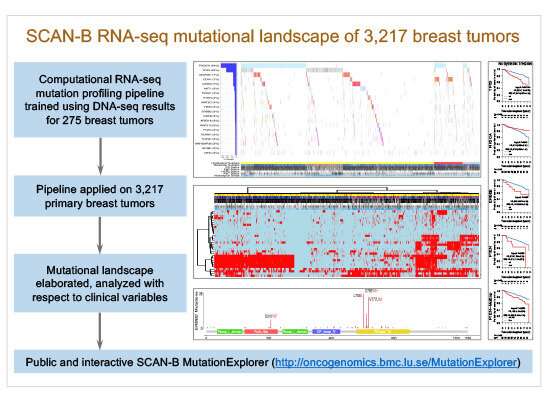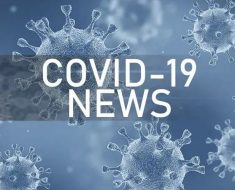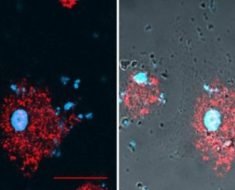
Researchers at Lund University in Sweden have developed a computational model which is effective in detecting and identifying genetic mutations in breast tumors. The study, the largest of its kind in the world, includes results from over 3,200 patients with breast cancer.
The researchers used RNA sequencing, a sensitive, precise tool which has very gradually started to be applied clinically, although not yet for breast cancer. The study, published in the scientific journal EMBO Molecular Medicine, used breast tumors for analysis from the unique Swedish SCAN-B project. Since it was initiated over 10 years ago, across a wide geography of Sweden SCAN-B has enrolled over 15 000 patients with breast cancer thus far, and around 100 additional patients are included every month.
“We hope that SCAN-B RNA sequencing will be in clinical use as early as next year, mainly to help in the identification of which breast tumors are high-risk and which are low-risk. The aim is for the patient to know, already a week after surgery to remove the tumor, which personalized treatment is best suited to the individual,” says Lao Saal, one of the researchers who led the study.
When the Lund team analyzed the genetic mutations in the breast tumors of the patients in the study, they found that almost 87 percent had at least one mutation for which potential drugs already exist.
“When we followed the patterns of mutations in the tumors and related them to patient outcomes, we observed that 34 percent of them had a mutation in a specific gene, PIK3CA, and that in general these patients had a good prognosis. In 3 percent of the patients we found mutations in another gene, ERBB2, which was associated with a worse prognosis,” says Lao Saal.
“The results of the study add another dimension to how RNA sequencing can be used as a potential future ‘clinical tool,’ as we showed that breast cancer RNA sequencing not only gives a readout of the patterns of genes being highly or lowly expressed, but also works to detect and identify gene mutations in breast cancer tumors. We are therefore convinced that the technique would be helpful in improving prognosis and treatment for patients.”
In the same study, doctoral student and first author Christian Brueffer also developed a web database and interactive software through which other researchers can access the results for their own studies.
Source: Read Full Article





